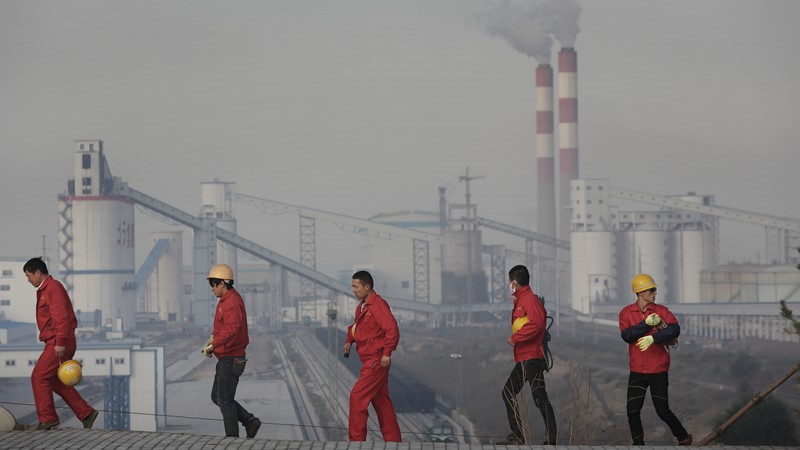Some of the world’s largest emitters have missed the UN’s extended deadline for submitting updated climate plans to be included in an assessment of progress towards the Paris Agreement goals ahead of Cop26.
Countries had until midnight central European time on Friday to submit their plans to UN Climate Change, with emissions cutting targets for 2030.
Just over half of all parties to the Paris Agreement, 110, made the deadline with an estimated 40% of them from climate vulnerable nations – a tally UN Climate Change described as “far from satisfactory”.
There was a rush of submissions this week with Guinea, Israel, Oman, Zambia, Tanzania, Seychelles, Namibia, Nigeria, Malawi, Sri Lanka, Samoa, Malaysia, Barbados, Sao Tome and Principe, and Sierra Leone getting their plans in. US and Canada are among the major economies to have submitted since the last count.
But some of the world’s largest emitters, including China, India, Saudi Arabia and South Africa, have remained silent.
Alex Scott, think tank E3G’s climate diplomacy lead, told Climate Home News that leadership on 2030 emissions reductions plans was still coming from small island developing states and developing nations “whose emissions are towered by G20 countries”.
Want more climate news? Sign up to get updates straight to your inbox
Under the Paris Agreement, 2020 was the year countries were expected to present improved climate plans to UN Climate Change as part of a ratchet mechanism to meet the accord’s goals. But the coronavirus pandemic derailed the process.
A UN synthesis report published in February, which took into account updated plans submitted to the UN by the end of 2020, found that collective ambition was “very far” from putting the world on track to limit global heating to 1.5C.
At the time, only 75 countries covering around 30% of global emissions had submitted updated plans, including the EU and UK. Their pledges were estimated to reduce emissions by just 0.5% between 2010 and 2030.
Scott said the findings had come as a “reality check” and had helped “build a stronger political narrative for the outcome at Cop26 to be a pathway for how countries are going to act faster to keep 1.5C within reach”.
A backdrop of extreme heat in Northern America, devastating flooding in Europe and China and intense wildfires in Siberia and Turkey have further underlined the urgency for major emitters to curb emissions.
Around the world, climate change committees are steering government action
But despite some renewed political momentum, the picture isn’t likely to change much without enhanced action from emerging economies.
Niklas Höhne, a climate policy expert at the NewClimate Institute, told Climate Home News there remained a “gigantic gap” between current levels of emissions and the action needed by 2030.
Commitments made as of April would still lead to 2.4C of warming by the end of the century if implemented in full, according to Climate Action Tracker.
“With all the pledges on the table we are basically stabilising global emissions by 2030 when we should be cutting them by half,” said Höhne.
Leading scientists at the Intergovernmental Panel on Climate Change have said emissions should fall 45% from 2010 levels by 2030 to limit temperatures to 1.5C by the end of the century.
The picture for long-term goals is slightly better. NewClimate Institute’s latest estimates found that if all net zero emissions goals are met, the world could limit temperatures to 2C, in the most optimistic scenario, by the end of the century, said Höhne.
“The long-term ambition has improved significantly in the last six months but it has not propagated to short-term ambition and short-term action,” he added.
Ethiopia to shift from beef to chicken production under updated climate plan
During a meeting of climate and ministers last week, all G20 countries agreed to “update or communicate ambitious NDCs by Cop26”.
Among those to have already submitted, Australia, Brazil, Mexico and Russia put forward emissions targets to the UN identical to or weaker than their previous versions, Climate Action Tracker found. Earlier this month, Indonesia updated its NDC, with unchanged headline targets but plans to peak emissions by 2030 and strengthened sectoral policies.
UN Climate Change head Patricia Espinosa said the UN had called on countries that have already presented their plans “to look at them again, and if possible, come up with revised NDCs”.
China, which is responsible for around 27% of global emissions, is only proposing an incremental strengthening of its 2030 climate plan, which Climate Action Tracker rates as “highly insufficient” to meet the Paris goals.
“Cop26 is the good faith actor test for China,” Li Shuo, of Greenpeace East Asia, told Climate Home News.
“Ultimately, there is going to be nowhere to hide at Cop26. Each of us will be in the spotlight,” warned Cop26 president designate Alok Sharma during a press conference on Monday.
